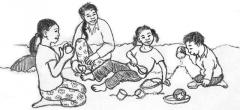Your progress
0%
complete
The United Nations Educational, Scientific and Cultural Organization (UNESCO) estimates that more than 90% of children with disabilities in low-income countries do not attend school. An estimated 30% of the world’s street children live with disabilities. For adults with disabilities, the literacy rate is as low as 3%, and even as low as 1% for women with disabilities in some countries.
From these figures, it is evident that steps must be taken to ensure access to education for all children with disabilities.
Learn about how a programme in Mongolia worked with the community to create more inclusive education for children with disabilities.


In Mongolia, the government, a parents’ association, international non-governmental organizations, and European Union donors are working together to develop a national inclusive education programme is developing. Prior to 1989, Mongolia provided special schools and residential care for children and adults with disabilities. This system addressed basic needs, but deprived people with disabilities of other rights such as their inclusion in society. However, after some political and economic changes forced these special schools and institutions to close, the ground was cleared for a new approach.
In 1998, the Association of Parents with Disabled Children (APDC) was founded with support from an international non-governmental organization to protect the rights of children with disabilities. APDC carried out the following activities:
CBR was integral to APDC’soverall strategy of promoting and protecting the rights of children with disabilities. In 2003, the Ministry of Education established the Inclusive Education Unit and worked in collaboration with the Ministry of Health and the Ministry of Social Welfare and Labour to establish a programme implementing committee. At the local community-based level, they established services for early identification, medical treatment and rehabilitation with priority focused on inclusive education at both the preschool and primary levels.
Now, over 1000 children with disabilities are included in kindergartens, and teachers are all trained to work inclusively. APDC continues to grow and network with other groups nationally and internationally to promote the rights of children.